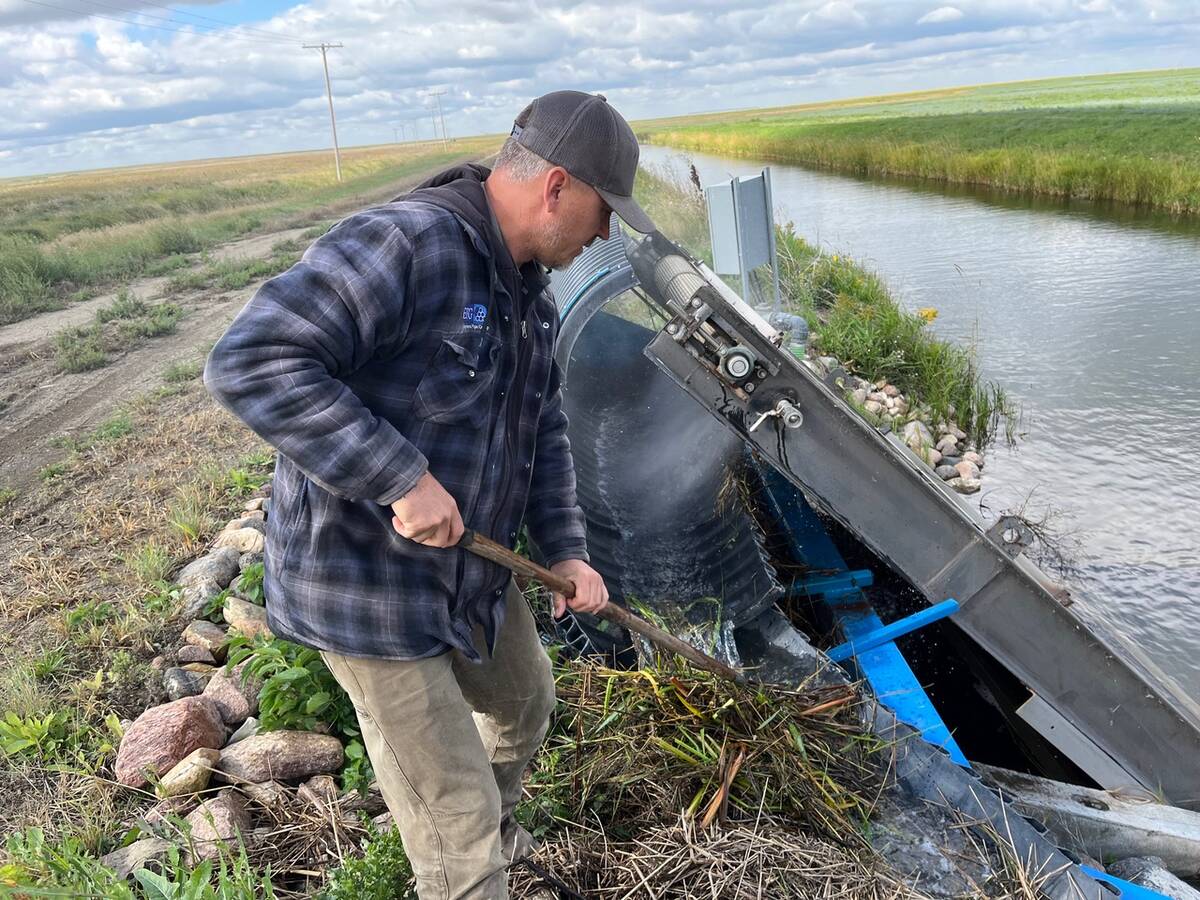A for sale sign swings outside the entrance to Roy Leitch Livestock north of Regina.
The lamb feedlot is empty and the owner says the days of feeding thousands of lambs there are over.
“Things have changed,” Roy Leitch said.
The demand for Canadian lamb is tremendous, he said, but it’s only for a specific size of lamb – about 115 pounds. If he feeds too many, and ends up not being able to market them at that size, he will miss that lucrative market. Fatter animals are destined for the United States.
Read Also

Saskatchewan farmer uses tile drainage to manage water
The integration of both irrigation and tile drainage results in higher yields, water efficiency, improved soils and less nutrient runoff, says one producer.
“It’s the numbers you’ve got to watch,” he explained.
Leitch bought the facility near the edge of the Qu’Appelle Valley in 1996 from the Saskatchewan Beef Cattle Performance Association, which had used it as a multi-breed bull and heifer test station.
At his facilities in Regina and another at Brandon, Leitch fed 90,000 lambs per year at peak operation. About 60,000 of those went south.
But after the border closed due to BSE and producers began downsizing, it wasn’t viable to operate both locations, he said.
He thought he had the Regina facility sold last summer but the worldwide economic collapse scuttled that deal. He is using it to assemble and ship lambs for feeding at the Brandon lot, where he expects to feed about 40,000 this year even though the capacity is 75,000.
“At the most we want 15,000 (at one time) or they’ll get way ahead of us,” he said, referring to the market weight.
The Regina facility no longer fits his business model.
“Right now we’re trying to sell it,” Leitch said. “We’re going to do what we can to get the most out of it.”
The 154-acre property, located in the Rural Municipality of Lumsden, has been rezoned from agricultural to commercial to accommodate what the prospective buyer had planned – storage.
At a public hearing about the rezoning last fall, neighbours expressed their relief that the lambs and the smell they create would be gone.
“I’ve lived there for 37 years and before that it was a bull testing station,” said one person quoted in the hearing minutes.
“You never heard a complaint from anybody around there about it. But since it’s been what it is you couldn’t even give your property away a few years ago because of that.”
There are two houses on the property and both are currently rented.
Leitch said the feedlot is too large to sit unused and converting the property to accommodate dry storage of vehicles and mini-storage would at least mean some tax revenue for the RM.
He added he will still be a major purchaser of Saskatchewan lambs.
“Even if the place is sold we will rent an assembly facility,” he said. “We certainly will be looking after the producer.”

















